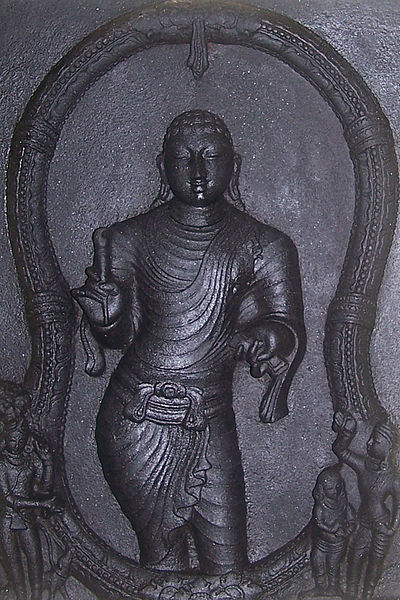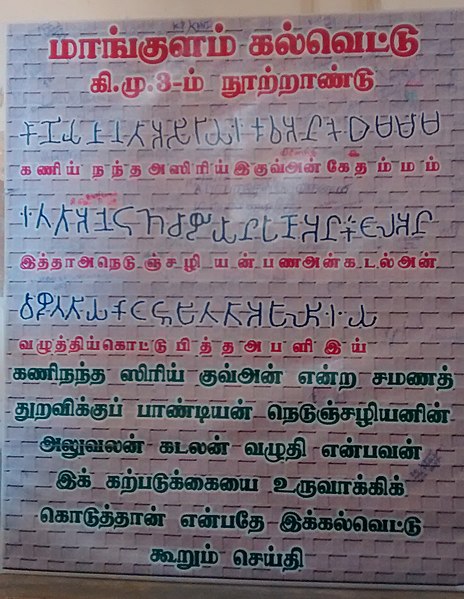The Sangam literature historically known as 'the poetry of the noble ones' connotes the early classical Tamil literature and is the earliest known literature of South India. The Tamil tradition and legends link it to three legendary literary gatherings around Madurai and Kapāṭapuram: the first lasted over 4,440 years, the second over 3,700 years, and the third over 1,850 years. Scholars consider this Tamil tradition-based chronology as ahistorical and mythical. Most scholars suggest the historical Sangam literature era, also called the Sangam period, spanned from c. 300 BCE to 300 CE, while others variously place this early classical Tamil literature period a bit later and more narrowly but all before 300 CE. According to Kamil Zvelebil, a Tamil literature and history scholar, the most acceptable range for the Sangam literature is 100 BCE to 250 CE, based on the linguistic, prosodic and quasi-historic allusions within the texts and the colophons.

Sculpture of the Ancient Tamil Siddhar Agastyar who is traditionally believed to have chaired the first Tamil Sangam in Madurai
South India in Sangam Period
Ilango Adigal is the author of Silappatikaram, one of the five great epics of Tamil literature.
A palm-leaf manuscript (UVSL 589) with 100 folios, handwritten in miniature scripts by Shaiva Hindus. This multi-text manuscript includes many Tamil texts, including the Sangam era Tirumurukāṟṟuppaṭai. The folio languages include mainly Tamil and Sanskrit, with some Telugu; scripts include Tamil, Grantha and Telugu. It is currently preserved in U.V. Swaminatha Aiyar library in Chennai.
Tamil is a Dravidian language natively spoken by the Tamil people of South Asia. Tamil is an official language of the Indian state of Tamil Nadu and union territory of Puducherry, and the sovereign nations of Sri Lanka and Singapore. Tamil is also spoken by significant minorities in the four other South Indian states of Kerala, Karnataka, Andhra Pradesh and Telangana, and the Union Territory of the Andaman and Nicobar Islands. It is also spoken by the Tamil diaspora found in many countries, including Malaysia, Myanmar, South Africa, United Kingdom, United States, Canada, Australia, New Zealand, United Arab Emirates, Saudi Arabia, France, Germany, Italy, Indonesia, and Mauritius. Tamil is also natively spoken by the Sri Lankan Moors. One of 22 scheduled languages in the Constitution of India, Tamil was the first to be classified as a classical language of India.
Findings from Adichanallur in the Government Museum, Chennai
Keezhadi excavation site
Explanation for Mangulam Tamil Brahmi inscription in Mangulam, Madurai district, Tamil Nadu, dated to Tamil Sangam period (c. 400 BC – c. 200 AD)
Tamil Brahmi script in the reverse side of the bilingual silver coin of king Vashishtiputra Sātakarni (c. AD 160) of Deccan. Rev: Ujjain/Sātavāhana symbol, crescented six-arch chaitya hill and river with Tamil Brahmi script Obv: Bust of king; Prakrit legend in the Brahmi script








